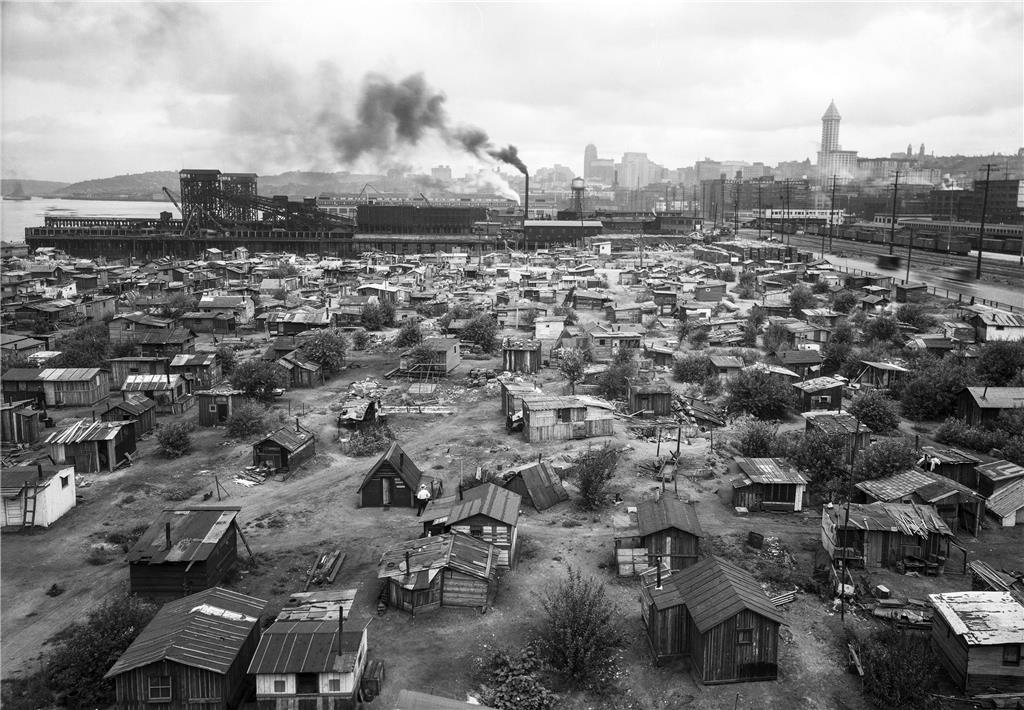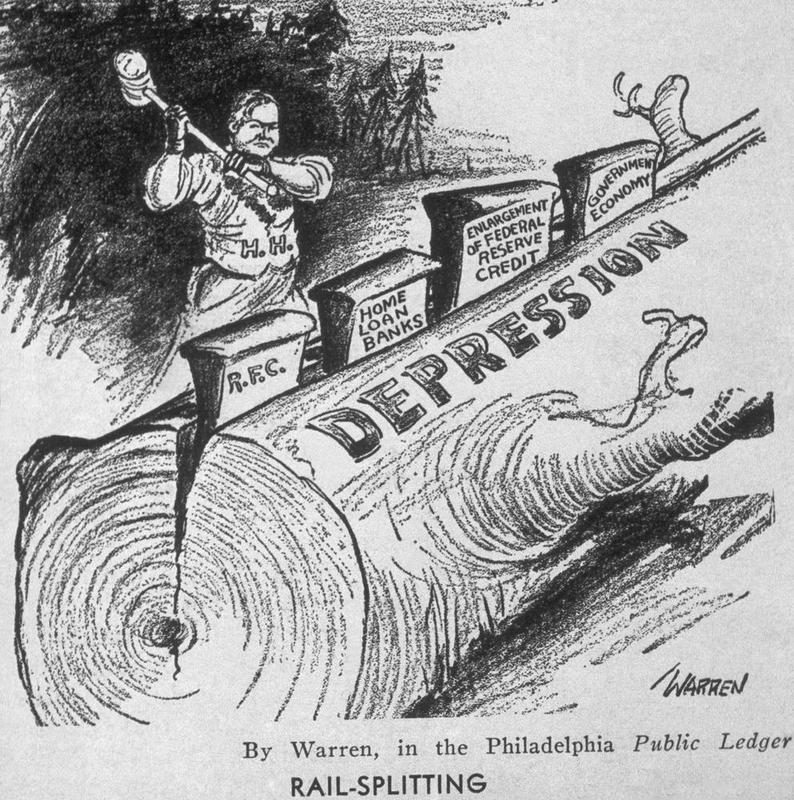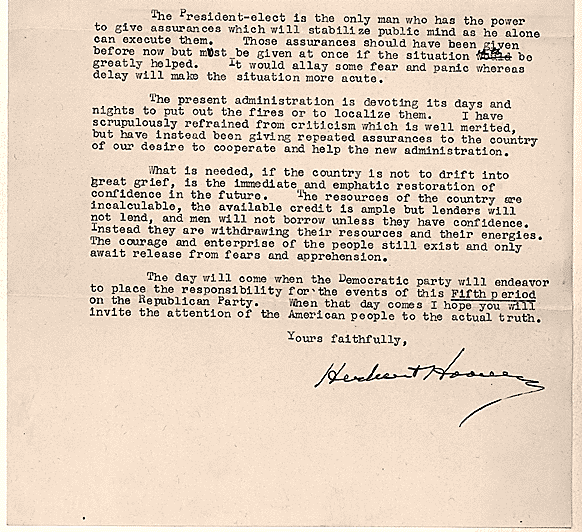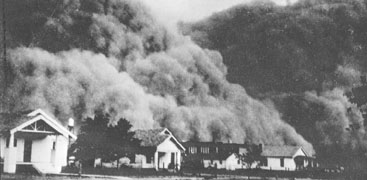The economic problems seen in urban areas were also evident in rural areas and worsened by natural forces. In some parts of the country, prices for crops dropped so precipitously that farmers could not earn enough to pay their mortgages, losing their farms to foreclosure. According to Great Depression survivor Dorothy Womble, "Americans had no money to buy seeds, plants or food".[1]
With the onset of a drought in 1930, the overfarmed and grazed land began to blow away, creating massive dust storms.[2] The storms enveloped entire towns, turning the sky black with sand.[3] The areas affected by these storms were appropriately named the Dust Bowl. The resulting agricultural devastation contributed to bank closures, business losses, increased unemployment, and other factors that increased the effects of the depression.



